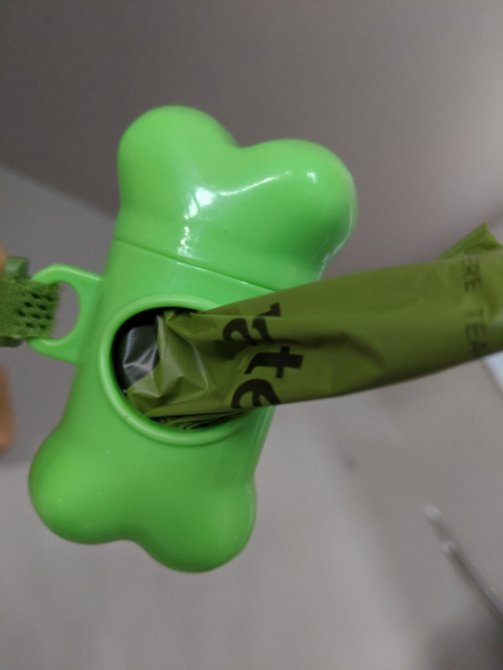I’ve received enough questions about pet waste that I feel I should address it. According to multiple sources, about 4% of residential waste is generated by our pets.
Pet waste of any kind may not go in the City of Austin green compost carts.
The City of Austin’s curbside compost contractor Organics by Gosh will not accept human or animal urine, feces or blood. This includes kitty litter too.
These items are even more dangerous to put in backyard compost systems as those usually do not reach the required high temperatures to appropriately break down harmful parasites and pathogens.
These guidelines are for safety, to protect us from viruses, bacteria and parasites in the animals’ waste. For these same reasons, I don’t recommend you bury pet waste in the yard, that is if you can even break through our clay and rocky Central Texas soil! These materials could work their way into into the water.
There are some companies that collect pet waste and turn it into a form of compost. Generally this compost is not intended for food crops or child exposure. Some examples that have come up are EnviroWagg and Green Pet Companies. I haven’t found a facility in Texas; these businesses seem to be located mostly in the western United States.
Cat waste is a more complicated matter because felines can harbor a hardy toxoplasmosis parasite you wouldn’t want in your compost, and many kinds of kitty litter aren’t degradable.
https://www.livescience.com/44732-eliminating-pet-poop-pollution.html
Instead of thinking about composting kitty litter, think instead about the container the litter comes in and how recyclable is it? Is it in a plastic tub? In a non-plastic lined paper box? Is it in a plastic-lined paper bag? If it’s not obvious, consider contacting the company. Most companies will respond to your inquiry within several days. Sometimes the company website, Amazon, or Wirecutter will have addressed the container material issue already.
The same can be said of dog waste bags. Is the bag made from post-consumer recycled plastic/recycled content? Is it made of corn or some other material? Does it have fragrance/perfume added to the bag? Is the box or wrapper recyclable? Is there a paper or plastic tube inside the roll and what is it made of: new or recycled content? Do you need another dog waste bag clip-on holder or can you buy refills? Focus more on what you can control right now: the packaging and the material content. These Original Poop Bags for example are made from recycled plastic and recycled paper. It has one of those annoying plastic windows, but it’s pretty green comparatively.
Be aware that while pet waste bags may say “compostable,” they’re compostable only in theory and/or at a facility that has the appropriate technology and temperatures to safely compost animal waste. So they’re only compostable in the ideal situation.
While most waste bags which are plastic, there are also bags made of corn or bioplastics. Pet waste bags are going to go in the landfill for the most part so it probably doesn’t matter what the bags are made of. I haven’t found definitive arguments for plastic vs biodegradable vs compostable bag material for waste that goes in the landfill. A good landfill is going to have proper measures in place to capture the methane that results from organic material breaking down, or sort-of breaking down, in the landfill anyway. In case you aren’t aware, most material doesn’t break down much in the landfill due to the extreme compression that takes place.
If a “biodegradeable” product does not have the BPI logo on the box, it does not meet the Biodegradeable Product Institue’s standards and could potentially release metals or toxins into the humus and soil.
http://www.austintexas.gov/blog/it-recyclable-compostable-or-biodegradable
Be careful reading packaging. Most “green” waste bags are only green because their packaging or the tube/roll core is recycled content. For example Earth Rated uses recycled paper for their boxes and their tubes/roll cores. That’s great, but considering the product itself is the pet waste bag and not the packaging, it would be better that the bag was recycled content as well. Another example, Mighty Paw, claims they’re eco-friendly because their plastic bags (HDPE) biodegrade. That just means it breaks down eventually, theoretically, in the landfill. It’s a virgin plastic bag with water resistant coating (probably more plastic) that probably won’t breakdown in the landfill because it will be mummified after being squashed to death.
I spoke to an Austin Water Utility representative. The representative confirmed the City of Austin has no mention of flushable waste bags on their website or in the Austin Water internal reference material. I was advised, that while flushable waste bags are not prohibited, Austin Water is not responsible if you clog up the system. Cat waste would still be prohibited in flushable bags due to the parasite, it doesn’t break down in water treatment plants. So my advice is to avoid flushable waste bags in Austin, Texas, but if you live elsewhere check with your water utility. Some cities do accept flushable dog waste bags, just not Austin.
So our takeaways here are no animal waste in the compost carts and buy the pet waste materials you think may have the lowest environmental footprint in your city.
